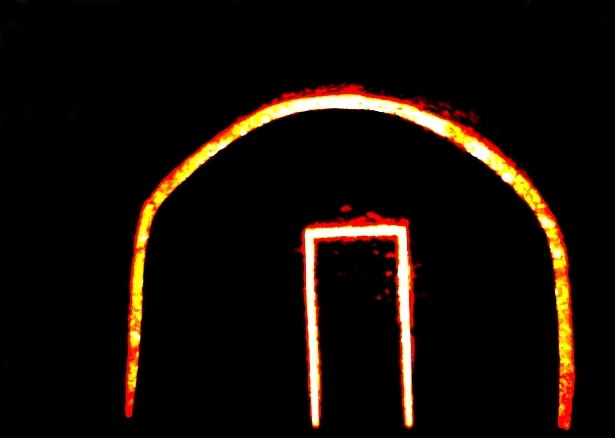Fabrizio Crisafulli, Light as Action, in Dorita Hannah, Olav Harsløf (ed.), Performance Design, Museum Tusculanum Press, University of Copenhagen, Copenhagen, 2008, pp. 92-103.
In my theatre work, I seek to entrust light with a role similar to that which it occupies in the natural world. Not by imitating it, but by considering light as a vital substance – an essential, primal and emergent element – and thereby liberating it from its secondary role as a tool for “effect” or “staging” to which it is often relegated. I believe that light does not belong only to the technical or visual domain. Its fundamental functions are to shape time and space, to become a dramatic structure, and serve as a means of unfolding “actions.” In my work these ideas are part of a mode of creating productions based on what I call “real relations.”
With this, I encourage participants to immerse themselves in a given situation, with precise parameters, deriving from an initial engagement with a theme or a text; or with the poetics of an author; or from a concrete relationship (physical, spatial, or visual). The situation might also be derived from a real site, as it is in the case of projects I call “Theatre of Places.” The participant’s reactions and suggestions form additional variations on the initial situation during the embryonic stage of the production, modifying its relations. In rehearsal, a “place” is created: a realm of evolving relationships.
This process is crucial for determining the role of light, which, even though it differs from production to production, remains an integral and evolving element within the entire set of relations. In other words, light is not a technical element “projected” onto the production, but becomes a component of the relational “place” itself: woven into the actions, time, spaces, forms, sounds and words that define themselves through their relationship with each other. In relation to these elements, light is both origin and consequence. From the beginning it is considered an active and formative factor.
For the “Theatre of Places” (a project adopting the real site as the central text of each performance), light also acknowledges the pre-existing physicality of the site. It does therefore not intervene purely as “illumination” but seeks an exploration of the site’s essence in order to both adhere to the original Fabrizio Crisafulli 80 identity of the site while transforming it. Light is “born” from the objects, from the architecture and from the landscape – shaping itself from these. At the same time, from this light emerge entirely new situations. I also try to manifest this in my installations.
In some cases, I establish a reciprocal exchange between the projection and the object, between the digital realm and the material world. One problem occurring with projections in general is that they are – technically and symbolically – an element separate from space, body, and matter. Moving images, primarily video projections, are often used today to parallel or juxtapose other actions. My intention is to utilize projections as a means of bringing the digital image and the object into the same sphere of relations. Consequently, I do not use pre-recorded material. Instead, I sculpt the projection’s beam in the space, based on all of the information provided by the object, onto which the projector is directed from the beginning. The object thus becomes the matrix of the digital image from which I create a moving composition on the computer, based on the variable interplay between the form of light and the form of the object. In the end, the projection makes the object “move” and “perform.” Such an encounter between digital image and matter opens up a new dimension – empty, mysterious, suspended – that is difficult to attribute to a solely digital sphere.
